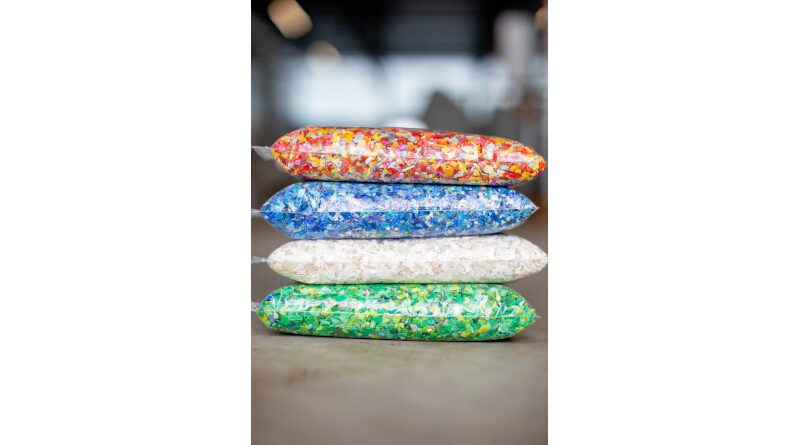Do you know the CO2 impact of your recycled bottle?
Plastics separation of household plastics waste on particle level via magnetism – by Lucy van Keulen, Commercial Director, Umincorp
Research produced for Zero Waste Europe by sustainability consultancy Eunomia shows that most PET plastic recovered from bottles in Europe does not make its Recycling has everyone’s attention. But what is the source of this recycled plastic: Does it come for example from the Netherlands or from Turkey? Does it come from households or from companies? How sustainable is it recycled? One recycled plastic is not like another, and there are large differences in emissions between plastic recycling methods, Lucy van Keulen from Netherlands-based Umincorp points out, and shares her opinion in this article on how post-consumer plastic waste can be recycled efficiently and what role the CO2 level is playing.
The different plastic recycling methods vary in many aspects. The most common recycling approach in Europe uses infrared sensors to recognise the type of plastic to be recycled. This method has three challenges. First, it is limited in recognising packaging that consists of different types of plastic (broadly speaking PP, HDPE and PET), and the different types of plastics have to be pre-separated in a first step. The second challenge is that with this approach, a lot of input material is lost in getting from the mixed packaging to a pure end product. As a result, a significant portion cannot be sorted and ultimately recycled. The final challenge is that sorting often takes place somewhere other than the actual recycling. This leads to additional transportation, less optimisation and higher CO2 emissions.
Magnetic density separation
MDS (magnetic density separation), a mechanical recycling technique co-developed by the founders of the Dutch company Umincorp, is an alternative to conventional mechanical recycling in which different types of plastic are separated using magnetism. In this process, the plastic is first split into small particles after which the particles, consisting of the three most common types of plastic, can be accurately separated from each other. Because the plastic can be separated at particle level, the recovery rate of this technique is claimed to be higher compared to conventional methods. It also allows both sorting and recycling to take place at the same location, thus reducing CO2 emissions.
CO2 reduction remains underexamined in the current way we look at recycling. If we hold producers responsible for the total CO2 emissions in the chain, the actual impact of a product, including production, packaging and recycling becomes clear. The current discussion in the market about mechanical versus chemical recycling, becomes also direct clear when CO2 emissions are taking into account. An example can be seen with supermarkets that put minced meat in multilayer bags, thus saving on the amount of packaging compared to the original container. Often, however, the sachet is less recyclable, or not recyclable at all, whereas the PET container was.
By approaching packaging on the basis of CO2 emissions, companies can make the right choices while explaining them to consumers. A kind of CO2 label for packaging, similar to the nutrition label, could also give consumers more insight and thus help them make the most sustainable choice.
Insight into the chain
Another risk of the increasing popularity of recycling is the lack of understanding of the origin of the recycled plastic. There is already not enough PET or HDPE available in Europe to meet the demand of packaging producers. If new plastic is produced outside of Europe, chopped up and then sent to Europe as recyclate, this completely misses the point. However, due to a lack of full insight of the supply chain, such procedures cannot be ruled out.
Legislators also play a stimulating role in this. In the UK, companies have to pay extra tax on packaging that does not consist of at least 30% recycled material. The expectation is that this will increase the proportion of recycled material in packaging by 40%, saving about 200,000 t of CO2 emissions in the short term.
There are several levers that the entire plastic chain can pull simultaneously to reduce the climate impact of plastics. Every step in the chain, whether it is the producer, designer, legislator, recycler or consumer, should look at actually reducing the CO2 impact. More traceability, knowledge and understanding is needed to properly compare the different options.
Magnetic density separation (MDS) principle:
Umincorp’s patented mechanical recycling process is based on flake sorting. In an early stage of the process, all incoming plastics are cut into flakes and separated via MDS.
The MDS application, with a capacity of 10,000 t/a, makes use of specially designed magnets in combination with a unique water-based process fluid to separate heterogeneous input flows on density levels of each individual particle in one step. The magneto-responsive fluid, produced in-house at Umincorp, together with the permanent magnet, creates the required density gradient so that there are different densities at different heights in the machine. Particles flow through the density field, with light particles floating on the surface while heavier particles are suspended in the liquid below at different depths according to their density. The separation for the production of pure material fractions of equal densities are combined into one process by setting splitters in the right positions. The use of MDS in the plastics industry is claimed to result in high purity PP, HDPE, PS, PET, ABS, PVC, or other plastics fractions that can be used directly in new end products.
Umincorp was established in 2012 to develop and market its MDS technology. The idea was born in 2005 under the lead of Professor Peter Rem at the Delft University of Technology, the Netherlands.


